Isola Sacra - Central north part - Buildings along the Fossa Traiana [2]
In 1909 remains of buildings were found near the Bridge of Matidia, along the south bank of the Fossa Traiana. They were uncovered by Edoardo Gatti when the Fossa was made wider and the banks were consolidated. Three areas were excavated on the south bank and one area on the north bank.
The oldest wall in the western rooms on the south bank is of opus mixtum (hatched on the plan below). It is 0.75 wide. Later eight travertine bases were placed on top that supported brick piers (diam. 1.10) covered with plaster. The bases were at a distance of three to four metres from each other. Room a had a black-and-white mosaic floor with in the centre a small Bacchus and in the four corners heads representing the four seasons. In the centre of each side craters were depicted containing flowers and fruit. The mosaic was detached, but the current whereabouts are unknown. Below the floor coins were found of Antoninus Pius and Gallienus. In room b two steps led to a floor of opus sectile. In room c a round, brick well was found. To the east is a platform, A, that reached the ancient bank.
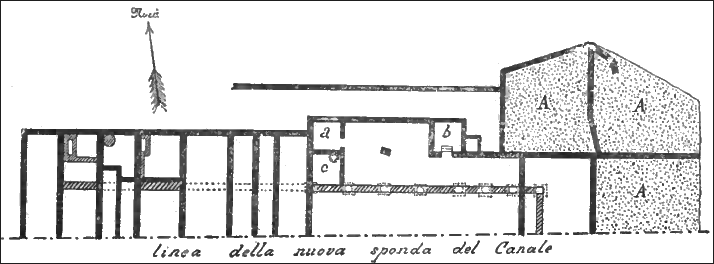
The western rooms. Gatti 1911, fig. 2.
The walls of the central rooms were of opus latericium and 0.50 wide. A curved part (a) had in the centre an opening towards the canal, 3.90 wide. On the outside it was reinforced by brick piers.

The central rooms. Gatti 1911, fig. 3.
In the centre of the eastern rooms is an entrance (a), 1.40 wide, with three travertine steps.
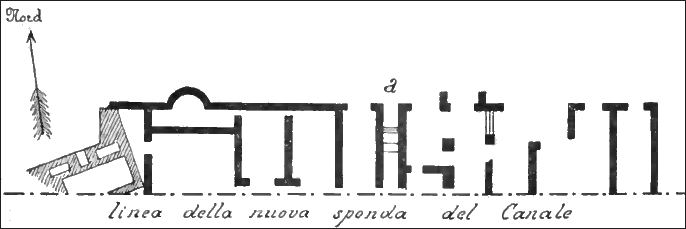
The eastern rooms. Gatti 1911, fig. 4.
In this context mention may be made of a huge and very high, round hut near the Fossa Traiana. It was visited by Charles-Victor von Bonstetten in the early 19th century. In the hut lived some fifty shepherds. It had a diameter of sixty feet. It was built inside and on top of ancient ruins. The hut can perhaps be seen near the south bank of the Fossa on a map in the Catasto Alessandrino, from the years 1660-1661.
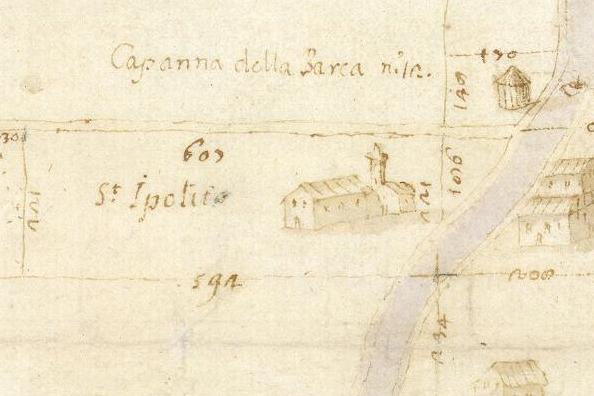
The map in the Catasto Alessandrino. A hut is on the upper right part.
Further rooms were found on the other bank of the canal, to the north-west of the western rooms on the south side. The walls are of opus reticulatum (w. 0.45) and opus latericium (w. 0.50). In one of the rooms five dolia defossa were found, one with the letters TI.

The rooms on the opposite side of the Fossa. Gatti 1911, fig. 5.
Many objects were found, including two fragments of a huge strigilated marble basin from a bath (labrum) decorated with heads of lions (lower w. 1.80, upper w. 2.20, h. 0.81), a weight, part of an altar, fragments of sarcophagi, etcetera. They do not necessarily belong here, because in the early 19th century Roman remains had been used to reinforce the banks.
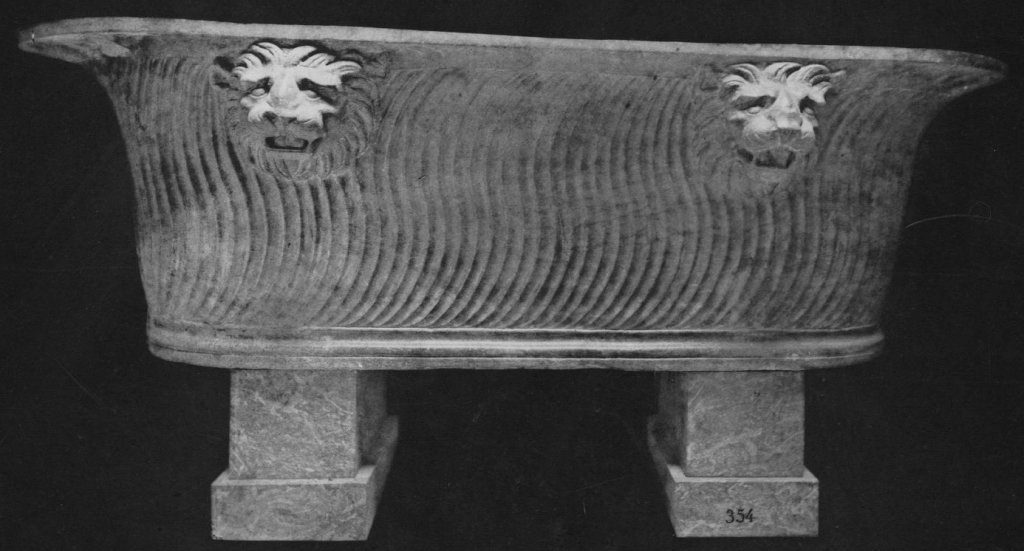
A strigilated oval labrum decorated with heads of lions in the Museo Torlonia (inv. nr. 354).
This could be the basin mentioned by Gatti.
Some more work took place in the area between 1972 and 1975. A Severan mosaic of a dolphin was then found. It can now be seen in the Castle of Ostia (see this poster).
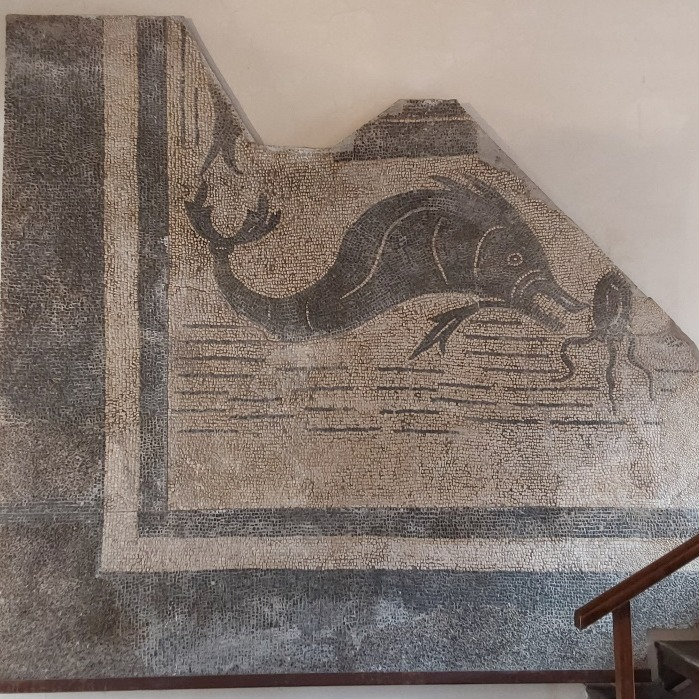
The mosaic of a dolphin found in the 1970's. Photo: Parco Archeologico di Ostia Antica.